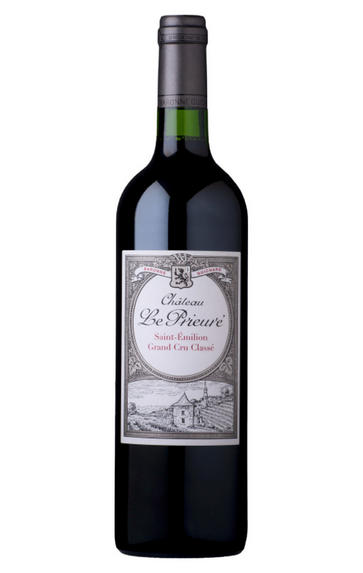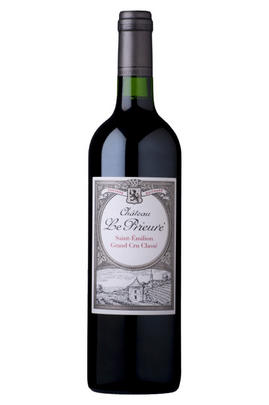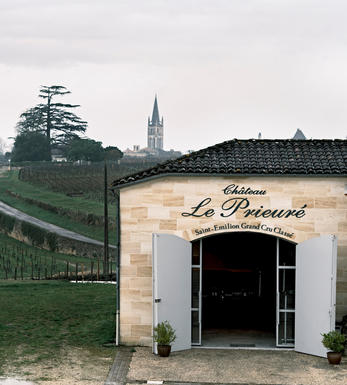
2017 Château Le Prieuré, St Emilion, Bordeaux

Critics reviews
Attractive ruby red colour, there is a roundness and sweetness to the brambly blackberry and bracken-edged fruits that gives energy and pleasure. Good balance and a sense of excitement.
Drink 2025 - 2042
Jane Anson, Decanter.com (Feb 2020)
Based on 77% Merlot and 23% Cabernet Franc, the 2017 Chateau Le Prieure offers loads of ripe red and black currant fruits as well as subtle chocolate and spice notes, medium to full body, a wonderfully textured, silky mouthfeel, and outstanding length. This is a forward, pleasure-bent yet balanced Saint-Emilion that's going to drink nicely for 15 years or more.
Drink 2020 - 2035
Jeb Dunnuck, jebdunnuck.com (Feb 2020)
About this WINE

Château Le Prieure, Saint-Emilion
Château Le Prieuré is a Grand Cru Classé estate in the appellation of St Emilion on Bordeaux’s Right Bank. Since 2020, Le Prieuré and its sibling properties (Siaurac and Vrai Croix de Gay) have been under the same ownership as Château Calon Ségur. The Suravenir insurance group acquired them from none other than Artémis Domaines, the owner of Château Latour, Clos de Tart and Château-Grillet, among others.
There has been considerable investment here by the successive owners. Much of the 6.24-hectare vineyard sits on St Emilion’s limestone plateau, near Château Trotte Vieille, with well-sited parcels dotted elsewhere. The vineyard has been certified organic since 2018; the team follow biodynamic practices in the vineyard.
There is a world-class team in place here. Vincent Millet oversees this and the other Suravenir properties; Technical Director Pénélope Godefroy has been retained by the new owners; and the legendary Jean-Claude Berrouet, long-time winemaker at Petrus, is the consultant.

St Émilion
St Émilion is one of Bordeaux's largest producing appellations, producing more wine than Listrac, Moulis, St Estèphe, Pauillac, St Julien and Margaux put together. St Emilion has been producing wine for longer than the Médoc but its lack of accessibility to Bordeaux's port and market-restricted exports to mainland Europe meant the region initially did not enjoy the commercial success that funded the great châteaux of the Left Bank.
St Émilion itself is the prettiest of Bordeaux's wine towns, perched on top of the steep limestone slopes upon which many of the region's finest vineyards are situated. However, more than half of the appellation's vineyards lie on the plain between the town and the Dordogne River on sandy, alluvial soils with a sprinkling of gravel.
Further diversity is added by a small, complex gravel bed to the north-east of the region on the border with Pomerol. Atypically for St Émilion, this allows Cabernet Franc and, to a lesser extent, Cabernet Sauvignon to prosper and defines the personality of the great wines such as Ch. Cheval Blanc.
In the early 1990s there was an explosion of experimentation and evolution, leading to the rise of the garagistes, producers of deeply-concentrated wines made in very small quantities and offered at high prices. The appellation is also surrounded by four satellite appellations, Montagne, Lussac, Puisseguin and St. Georges, which enjoy a family similarity but not the complexity of the best wines.
St Émilion was first officially classified in 1954, and is the most meritocratic classification system in Bordeaux, as it is regularly amended. The most recent revision of the classification was in 2012

Merlot
The most widely planted grape in Bordeaux and a grape that has been on a relentless expansion drive throughout the world in the last decade. Merlot is adaptable to most soils and is relatively simple to cultivate. It is a vigorous naturally high yielding grape that requires savage pruning - over-cropped Merlot-based wines are dilute and bland. It is also vital to pick at optimum ripeness as Merlot can quickly lose its varietal characteristics if harvested overripe.
In St.Emilion and Pomerol it withstands the moist clay rich soils far better than Cabernet grapes, and at it best produces opulently rich, plummy clarets with succulent fruitcake-like nuances. Le Pin, Pétrus and Clinet are examples of hedonistically rich Merlot wines at their very best. It also plays a key supporting role in filling out the middle palate of the Cabernet-dominated wines of the Médoc and Graves.
Merlot is now grown in virtually all wine growing countries and is particularly successful in California, Chile and Northern Italy.


Buying options
Add to wishlist
Description
Attractive ruby red colour, there is a roundness and sweetness to the brambly blackberry and bracken-edged fruits that gives energy and pleasure. Good balance and a sense of excitement.
Drink 2025 - 2042
Jane Anson, Decanter.com (Feb 2020)
wine at a glance
Delivery and quality guarantee